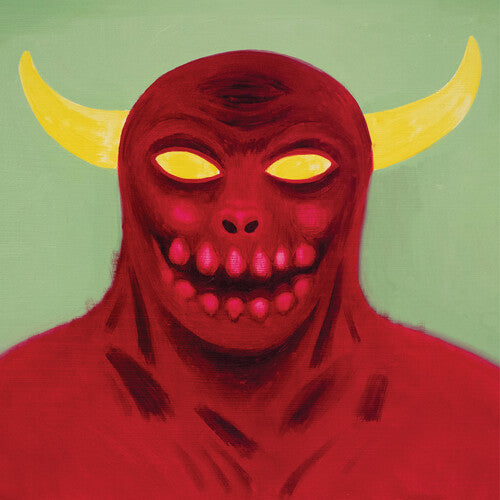Western Vinyl
Joseph Shabason - Welsome To Hell - Red/black
Joseph Shabason - Welsome To Hell - Red/black
Out of stock
Couldn't load pickup availability
SKU:WVNL257C1.1
Share
What does hell look like? The introduction of Toy Machine skateboard's seminal 1996 video Welcome to Hell with it's pulsing overlay of the Stars and Stripes on top footage of police officers, businessmen, and fast food service workers, would appear to paint hell as the mirage of American exceptionalism. A thick, centuries-spanning unreality that may not outwardly trade in fire and brimstone, but if you turn your nose to the wind, you'll smell sulphur.What comes after that scene, born of - or despite - those apparent depictions of damnation, would become a cultural touchstone: skateboarding performed at the highest level, composed and displayed in a fashion that would influence and endear audiences for decades to come. Welcome to Hell features a unique and progressive patchwork of skateboarders, most of which would become icons in their world, and helped redefine what the modern skateboarding video could be.A young Joseph Shabason felt that impact. The acclaimed musician hit rewind on his VHS copy of Welcome to Hell hundreds of times in his youth, each watch as thrilling as the last. That invigorating, improvisational, full-body experience of skateboarding is one that Shabason likens to jazz, where a shared language exists between the wheels and woodwinds. The way the skateboarder and musician command that language is what distinguishes them, adding definition to the mercurial concept of "style." This connection becomes most apparent in collaboration; ensembles of skaters and musicians are a noisy, creative bunch. Reflecting on this relationship and the Toy Machine classic would ultimately lead Shabason to wonder: what does hell sound like?The answer was a concept album that, like his previous records, lives in the personal. One that, much like skateboarding itself, would push him to try something new: rescoring Welcome to Hell. The video's original soundtrack served as a musical awakening for many - an active, aggressive mix of songs from bands like The Misfits, Black Sabbath, and Sonic Youth. Here, you'll find that recontextualized, softened, yet no less energizing. Over the album's ten songs, Shabason plays with the angular and ambient, exploring large group melodies that move forward with the on-screen action, shifting the mood in subtle and substantial ways that reframe our understanding of this culture-defining skate video and the skateboarders in it.In Shabason's "Hell," quintessential "East Coast powerhouse," Mike Maldonado is backed by a sharp, driving modal composition that calls back to 1970s Miles Davis, the melodic sensibilities of Azimuth, and stands as a fascinating complement to Maldonado's hard-charging on-board approach. The debut of Elissa Steamer, a pioneer decades ahead of her time, is given fresh spirit with an off-kilter funk. Brian Anderson, whose virtuosic section was originally guided by a dour Pink Floyd track, now flies across the screen in jazzy fits and starts, punctuated by the joyous wail of Shabason's saxophone. Nowhere does the fluid and improvisational intersection of skateboarding and jazz meet and swell than with Donny Barley. His easy, instinctual cool flecked with tinkling synths and bass lines that echo the natural power of Barley's abilities.Shabason then creates what could be rightly considered an audio portrait of Ed Templeton. The celebrated visual artist, photographer, and founder of Toy Machine cuts a distinct profile, which Shabason distills with a throbbing, slanted rhythm and an eerie layering of feedback and pressuring keys. The "curtains" section in Welcome to Hell belongs to Jamie Thomas, whose career-defining performance here would set the stage for a decades-spanning career and a level of influence in skateboarding that is still felt today. Shabason meets Thomas' epic with a commanding, angular rhythm that builds and flows with the momentum of his skateboarding. Airy group melodies mingle with a wonked-out vibraphone and tight percussion that let's loose in florid bursts before devolving into a finishing sequence of muscular improvisation - a fittingly bold interpretation of the work of one of skateboarding's most daring practitioners.Finally, as if ending with his thesis statement, the last song of Shabason's Welcome to Hell is a calming vocal harmony that lies atop the video's infamous "bail section." A horrific collection of skateboarders falling and twisting themselves into agonizing, unnatural shapes - a Hieronymous Bosch captured on VHS. It's the culmination of the unexpected made whole. Shabason's album a provocative reimagining that instills a new sense of awe in the 27-year-old classic, prompting the question first posed by the original: what if hell was a place you wanted to return to again and again?



